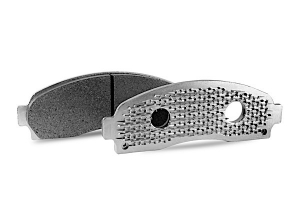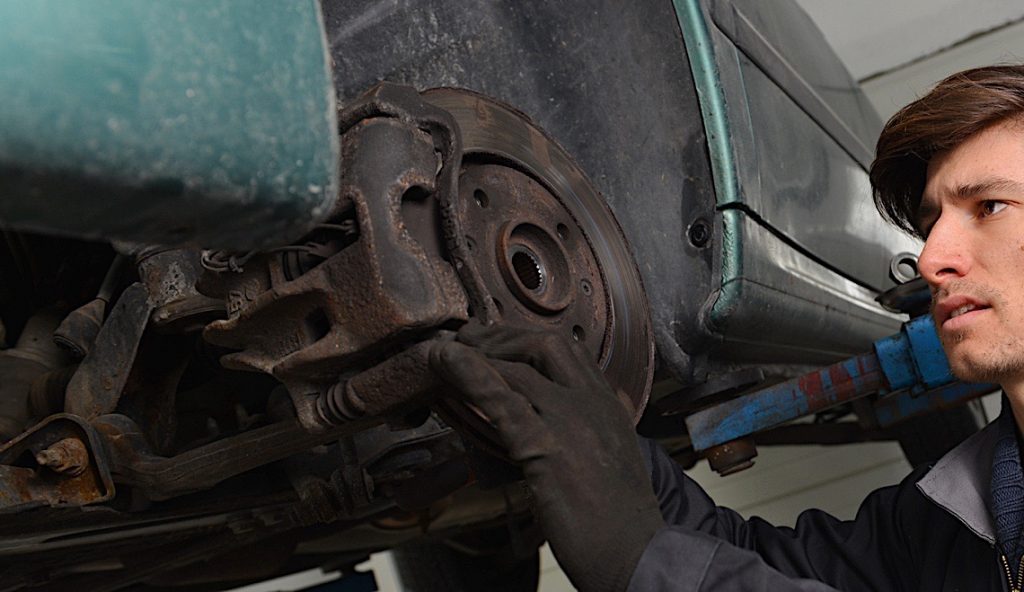
A brake pad’s life cycle is one of constant wear and replacement. It pushes against the rotor or drum, withstanding massive amounts of heat and load, and stop your trucks when it’s needed most. As with other wearables (we’re looking at you, tires) you want to make sure that your brake pads of choice are performing efficiently. The last thing you want are brake pads that are continually crumbling apart before the end of their expected life, increasing service costs and increasing the stopping distance of your truck.
“A brake pad should be able to last the life of the friction material without breaking down due to the effects of corrosion,” said Scott Lambert from the Global Brake Safety Council, singling out one of the biggest culprits of reduced brake pad life. “Issues like pads binding in the caliper and uneven brake wear are typically due to corrosion. All of these contribute to a compromised, unsafe braking system. Not to mention, the shorter service life which means less profits for any fleet.”
While the chemical slurry of de-icers municipalities coat roads with are a distant memory to us as the summer sun arches to zenith, your brake pads remember. They’re more destructive than salt alone because they cling to the undercarriage and eat away at vulnerable steel. While you can’t impact what your brake pads face on the open road, you can prepare your safety systems by spec’ing the right brake pads.
In our heavy-duty world, the first brake pad consideration corner is: attachment. While automotive brake pads offer adhesive or mechanical attachment, heavy-duty OEMs have specifically required mechanical attachments to help ensure that brake pad friction doesn’t break away from the backing plate on which it is attached. Of course, with the proliferation of brake pad suppliers, it’s worth asking your supplier how the friction material is attached to the backing plate.
“Truck brakes experience tremendous heat and high shear loads; high heat accelerates the breakdown of the adhesive and leads to the complete separation between friction material and braking plate and brake failure,” Lambert said. “OEMs will not approve adhesive based brake pads for certain weight ra

nges of vehicles, and neither should the aftermarket. This includes many pickup trucks and utility vans.”
The second consideration is corrosion protection. Powder-coated and painted brake pads may be standard, but put those coatings up against the toughest working conditions on the planet—de-icers, potholes, gravel, debris, rain water, construction dirt and dust—and the powder-coating or paint will chip, exposing raw steel ripe for rust.
Some brake pad manufacturers are offering new solutions to combat corrosion. Galvanization is one of the latest options. It trades a painted backing plate for one that’s treated with a protective zinc coating. The steel backing plate is electro-galvanized using a zinc alloy to provide complete corrosion protection and improve use in proper applications.
 “The fit and function of the brake pads is vastly improved with galvanization—no paint build up when installing, and no rust build up on brake pad edges that causes binding, and uneven wear in the caliper,” said Troy Hylton, vice president, engineering, NRS Brakes, who noted that the galvanized, mechanically attached brake pads can last up to four times longer than traditional painted brake pads. “It is critical that you buy brake pads that meet or exceed OEM specs; your brake pads are the most important safety component in your vehicle.
“The fit and function of the brake pads is vastly improved with galvanization—no paint build up when installing, and no rust build up on brake pad edges that causes binding, and uneven wear in the caliper,” said Troy Hylton, vice president, engineering, NRS Brakes, who noted that the galvanized, mechanically attached brake pads can last up to four times longer than traditional painted brake pads. “It is critical that you buy brake pads that meet or exceed OEM specs; your brake pads are the most important safety component in your vehicle.
